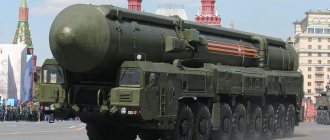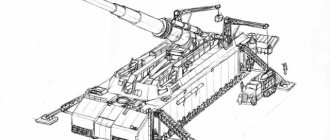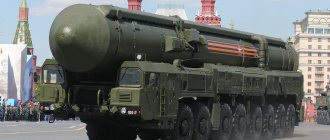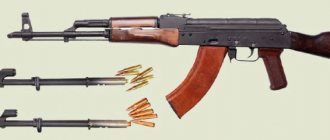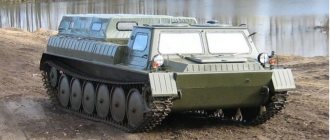It is impossible to list all the legendary military equipment of the 20th century, so we will present only some of the “fighters” who distinguished themselves on the battlefields of the last century. Of course, this article includes only a small portion of the glorious guard, and not all of its representatives who have survived to this day are lucky enough to end up in museums - many live out their days in landfills. A second life is given to such vehicles by Michael Manousakis, a recognized specialist in restoring decommissioned military equipment, who is featured in the “Steel Boys” program on the Discovery Channel. One of her heroes is also included in our selection.
Mitsubishi A6M Zero (Japan)
From 1940, when it made its first combat flight, to 1942, when the new American Lightnings appeared, the Mitsubishi A6M Zero aircraft was perhaps the most advanced fighter on the air battlefields of World War II and certainly dictated its rules in the Pacific theater military actions. The car combined what at that time seemed incompatible: it was ultra-light in weight and at the same time had a powerful engine, which gave it incredible maneuverability in the air and allowed it to cover about two thousand kilometers without refueling - an impressive figure at that time.
But miracles do not happen: the advantages had to be paid for in strength and security. The pilot, by and large, could only be saved by his own skill and luck, since the light skin, devoid of armor, was not suitable for this. However, the Japanese pilots had no shortage of skill - the preparatory program for carrier-based aviation pilots (and in Japan the air force was formed on the basis of the naval forces and was their division) was designed for three years, and before starting training in landing on the deck , pilots were required to log between 200 and 500 training hours. The selection was very strict, and the program, among other things, included the samurai code of Bushido, which helped to instill a certain fatalism in the pilots, and subsequently led to the emergence of kamikazes.
Mitsubishi A6M Zero. 1941, takeoff for the attack on Pearl Harbor / ©wikipedia.org
The official name of the aircraft was the Type 0 Naval Carrier Fighter, and unofficially in Japan it was called the Rei-sen (“sen” is an abbreviation for the Japanese word for “fighter”, and “rei” translates as “zero”). The car received the “zero” marking according to the year of manufacture: 1940, when it appeared, is the year 2600 according to Japanese chronology. It was created by order of the fleet, and the requirements were quite stringent: flight duration with external tanks from 2 (in standard mode) to 6-8 hours (in economical mode), speed not lower than 500 km/h at an altitude of 4 kilometers and climb to three kilometers in three and a half minutes, high maneuverability, a certain set of weapons, a full set of radio equipment.
Initially, two and Mitsubishi competed for this order, but the first itself refused to compete because it considered such a set of requirements impossible. At that time, the brilliant aircraft designer Jiro Horikoshi worked as chief engineer at Mitsubishi, who undertook to solve this problem and solved it by lowering the strength standards, which resulted in a reduction in weight. True, it still could not have happened without Nakajima - the fleet insisted that their NK1S Sakae - 12 engine of 950 hp be installed on the vehicle. With. – Mitsubishi did not have its own development of suitable power at that time.
Mitsubishi A6M Zero at the Yamato Museum in Kure / ©wikipedia.org
Surprisingly, the allies, primarily the United States, did not take this aircraft seriously at first and did not believe that Japan could create a fighter capable of competing with their own. Although information about him came from China back in 1940, it was simply ignored. Moreover, when in 1941, the assistant aviation assistant to the US naval attache compiled a detailed report on the new aircraft, indicating all the flight characteristics, the US intelligence agency called this detailed document disinformation and absurdity. The Allies were convinced otherwise only by the attack on Pearl Harbor in December 1941, where the Zeros played one of the main roles.
Frese Society War Machines
The main merit of the St. Petersburg carriage factory of engineer Pyotr Aleksandrovich Frese was the assembly of the first Russian car, modeled after the German Benz Velo. Then the tradition of copying was transferred to the military field: in 1902, the Frese company assembled the first domestic army vehicles - cars and trucks, no different from the cars of the French company de Dion-Bouton.
Cars of Peter Frese at a military review in St. Petersburg. 1902
The Minister of War, having approved the purchase of such equipment, turned to Russian industrialists with a proposal to create their own “self-propelled guns” for the Russian army, but did not receive a response. To familiarize himself with the new equipment, Peter Frese placed eight of his machines in front of the General Staff. The passenger staff versions were equipped with single-cylinder engines with a power of 6–8 hp. front and rear, lever control or conventional steering wheel. Then they were tested on ordinary roads, where they “behaved with dignity,” and subsequently cars with a front engine remained in service at the General Staff.
Frese's light staff vehicles at the Kursk maneuvers. 1902
Battleship Warspite (UK)
The battleship HMS Warspite is certainly the most decorated ship in the British Navy's history: she set the British record for the most awards received both during the Second World War and during all the years spent afloat. He went through two world wars, was in service for more than 30 years and took part in dozens of large and small battles. Warspite was not the first of her class: built in 1913, she was the second Queen Elizabeth-class battleship. But the battleships of this class themselves became an important milestone in the development of the navy and supplanted their predecessors, the dreadnoughts.
For the first time, only oil boilers were installed on battleships of this type. Thanks to this, they could develop high speed. In addition, the ships were equipped with powerful guns capable of sinking almost any ship of that time. There were five ships of the Queen Elizabeth class, which were built to the same design, but they were not identical. “Warspite” was distinguished by a unique bow superstructure, which its “relatives” did not have.
The ship showed itself clearly during the Battle of Jutland in May 1916. He inflicted several serious blows on German ships, but he himself was damaged - a shell hit the engine room on the port side, as a result of which the Warspite lost steering control. Thanks to its powerful armor, even after numerous hits from large-caliber shells, the ship remained afloat and returned to the port itself, where it was repaired for two months. After that, he participated in several more battles of the First World War, and in 1918, after the signing of a peace treaty, he received a respite. However, it did not stand idle - cruises were made on it and exercises were conducted. In addition, during the period between the two world wars, Warspite underwent two major modernizations.
HMS Warspite, 1937 / ©imgur.com
At the beginning of World War II, Warspite distinguished itself during the Norwegian campaign at the Battle of Narvik in October 1939. The ship headed a group of nine destroyers, and its presence gave absolute superiority over the German ships. The decision to use a large battleship in a narrow fjord was risky, but it paid off. "Warspite" reliably covered the British ships from behind, sank two German destroyers Z-13 Erich Koellner and Z-12 Erich Giese, and also seriously damaged the third - Z-17 Diether von Roeder, which then, according to different versions, was either blown up by the Germans themselves, or finished off other British ships.
In 1940, the Warspite was transferred from the north to the Mediterranean Sea, where one of the most important points of its service record was the Battle of Punta Stilo: in it, the British veteran had to confront two Italian battleships at once: Giulio Cesare and Conte de Cavour " A cross exchange of shells began, but it took place at a very long distance - about 24 kilometers. Both sides shot wide, but the Warspite turned out to be more accurate - in the end, it fired a shell that hit the middle part of the Giulio Cesare hull, pierced two decks, a fire started, and some of the boilers failed. By that time, two more British battleships arrived to help Warspite: Royal Sovereign and Malaya, so the balance of power had changed radically. As a result, the Italians had to retreat, and the Worspite shot went down in history as one of the longest artillery hits on a moving target.
"Warspite" went through World War II with honor and was put into reserve in February 1946. It was originally laid up at Speedhead and was about to be turned into a museum. But in the end, the British Admiralty decided to sell it for scrap, which was done the same year. However, while being transported to Portsmouth for dismantling in 1947, a cable snapped en route and the ship was left stranded off the coast of Cornwall. Later it was carried out by the surf onto the rocks, from where the ship could not be removed even after several attempts. As a result, the Warspite was dismantled on the spot, and in 1955 it ceased to exist, but at the same time it remained forever in the history of the world fleet as one of its brightest pages.
Gorky Park May 9, 2022
Spring has arrived in Gorky Park. Despite the rainy and cool weather, there are festive blooms everywhere - pears, cherries, bird cherry blossoms, flower beds bloom with bright colors.
Witness to everything is the monument to A. M. Gorky:
On the territory of Gorky Park, on May 9, fun was organized in different parts of the park: on the dance floors there were dances with competitions, performances by song groups from different parts of the country, in the evening there was a concert by singer Julian Dassin with the Navy Orchestra.
Defenders of the Fatherland in Gorky Park near the fountain:
M4 Sherman tank
The M4 is the second most popular tank of World War II after the T-34: almost 50 thousand copies were produced, taking into account all modifications. The British nicknamed the M4 Sherman in honor of the American Civil War general William Sherman, and in the Soviet Union the model was simply called "emcha". The M4 was not a masterpiece of engineering, it could seem awkward, bulky and clumsy, but it was an excellent workhorse - reliable, unpretentious and easy to repair. But the most important thing is that there were many M4s and they were present in all theaters of military operations. By the beginning of World War II, the United States did not have tanks that could meet wartime technical requirements.
M4 / ©topwar.ru
American strategists relied on aviation and navy - these areas were indeed given close attention, but the tank industry was given almost no importance. The United States did not understand why tanks were needed at all, especially in large numbers. Everything changed dramatically after the fantastically successful German blitzkrieg in Europe: it suddenly became obvious that tanks were the main force on the battlefield. The Americans had to quickly catch up, using the existing capabilities of the automotive industry, which at that time was one of the best in the world, so there were no problems with the quality of the tanks. But there was not enough experience in tank building, which could not but affect the characteristics of the equipment.
M4 / ©wikipedia.org
Structurally, the M4 was not very successful, and all the shortcomings became apparent in the very first battles. Excessively tall, it made an excellent target on the field, gasoline engines were a fire hazard, and viewing slits weakened the frontal armor. At the same time, the crew felt quite comfortable, the tank moved smoothly and quickly on a hard surface, and the 75 mm caliber gun was powerful enough to fight the main German tanks of that time - T3 and T4. The M4 armor was also reliable - tough and non-fragile, it did not crack, and the neat holes that shells left in it were easy to patch.
The most important thing was the massive scale and timeliness of the appearance of the Shermans: they were needed at the front, especially in North Africa. The first M4s appeared there in August 1942, and by October there were already 250 of them. They played a decisive role in the battle of El Alamein, putting an end to Hitler’s Middle Eastern plans. The diesel models of the Shermans, the M4A2, which were supplied to the American Marines, also performed well: in the battles for the Pacific Islands, they completely defeated the frankly bad Japanese tanks.
MiG-15 fighter
The MiG-15 fighter, developed under the leadership of aircraft designer Artem Mikoyan, became a landmark for Soviet aviation. The machine embodied all the scientific achievements of that time in the field of aerodynamics and aircraft construction, and also forced the whole world to recognize the USSR as one of the leaders in fighter aviation. The Soviet jet era began in 1945: among the war trophies were German Junkers and BMW turbojet engines, on the basis of which domestic engineers and designers carried out their own developments.
Later, they also had English Rolls-Royce engines at their disposal, which made it possible to design the MiG-9, one of the first Soviet jet fighters. Testing began in the spring of 1946, and during test flights the vehicle performed well, so it was put into production. However, at the stage of mass production, the shortcomings of the MiG-9 became obvious - it lacked the speed and maneuverability that distinguished its foreign counterparts. It became clear that the fighter needed further modernization, and as soon as possible: the Cold War was gaining momentum.
MiG-15 / ©oruzhie.info
The MiG-15 used a progressive design with an axisymmetric engine located in the rear fuselage and a swept wing, unlike the MiG-9, which had straight wings. In addition, the designers abandoned the modified engine layout, like the MiG-19 (in which the engine is located in front under the wing and the cockpit is tilted, allowing the jet stream to go under the fuselage), and placed it in the rear of the fuselage, taking as a basis the experience with Yak-19 fighter. The wave resistance of the fuselage was also reduced through the use of an engine extension pipe. For the first time, a domestic fighter was equipped with on-board fire extinguishing equipment and a fire warning system.
The MiG-15's aerial debut took place in early 1950 in China, where the aircraft confronted Kuomintang aircraft and protected the skies of Shanghai. However, there were few battles, and Soviet pilots shot down only one enemy aircraft. After the MiG-15 was used to protect the air borders of the USSR, they shot down American intruders and Swedish reconnaissance aircraft, but their fame truly exploded during the war on the Korean Peninsula.
During this conflict, the USSR, together with China, took the side of North Korea, whose air force was completely destroyed by the UN coalition forces. The USSR sent the 64th Fighter Air Corps, armed with the MiG-15, to the country, and already on November 1, 1950, the first Soviet aircraft entered into battle with an American fighter. This came as a complete surprise to the enemy, for which the MiG-15 was subsequently nicknamed the “Korean surprise.”
MiG-15 / ©topwar.ru
Throughout the war, the Soviet jet fighter remained the main problem of the coalition forces: before the advent of the American F-86 Sabers, it had no equal in the sky, and it could compete with the Sabers in almost all characteristics, especially in rate of climb. The United States tried to get at least one relatively intact MiG-15 in order to understand the structure of the Soviet jet novelty - in April 1953, a reward of one hundred thousand dollars was even announced to anyone who could capture and provide the “fifteenth” US Air Force, but before the end of the war this no one succeeded.
From 1949, when the first MiG-15s were put into service in the USSR, until 2006, when the last models were deregistered by the Albanian Air Force, over 15 thousand aircraft were produced. They were in service with more than 40 countries and became the most produced jet aircraft in history.
Archimedes of Syracuse
During the siege of the city of Syracuse in 213-212 BC, the scientist Archimedes made many structures for defense. He built defense mechanisms of very great strength. According to the unanimous testimony of his contemporaries, Archimedes built throwing mechanisms with which it was possible to throw huge stones and entire logs over fairly long distances, which sank Roman ships.
With the help of structures built by Archimedes, the city’s defenders hooked enemy ships with special grips, lifted them and, throwing them down, sank them.
As a result, the Romans had to abandon their attempt to take the city by storm and switched to a long siege and, only taking advantage of internal strife in the city itself, captured Syracuse.
Multiple launch rocket system BM-13 (Katyusha)
The most popular Soviet rocket artillery combat vehicle, the BM-13, is known to everyone as the Katyusha. It is also called a weapon of victory, and the soldiers of Nazi Germany nicknamed the installation Stalin’s organ - for the appearance and sound made by the fins of the missiles. The BM-13 fired its first salvo at the very beginning of the war - on July 14, 1941 in the city of Orsha, where the echelons of the Third Reich arriving in the Vitebsk region with military equipment were destroyed. Within a few seconds, the occupied Orsha station came under heavy fire from the BM-13, which made it possible to cause irreparable damage to enemy positions, destroy military equipment, destroy fuel and ammunition, and prevent further advance of the enemy towards Smolensk.
BM-13 / ©wikipedia.org
The order to launch the BM-13 into production was signed literally a few hours before the start of the Great Patriotic War: the first inspection of the newest multiple launch rocket system took place on June 17, 1941 at a training ground near Moscow and made such an impression on the People's Commissar that three days later it was officially sent to series. On June 26, the first two vehicles for launching 132 mm caliber rockets were assembled at the Voronezh plant. Initially, the units were mounted on a three-axle ZIS-6 truck, and from the spring of 1942 - mainly on English and American all-wheel drive chassis, primarily on the Studebaker US6 imported under Lend-Lease.
BM-13 rocket launchers showed their exceptional effectiveness: a regiment salvo lasted five to ten seconds, and during this time over 570 shells were fired, and the affected area exceeded 100 hectares. In addition, during a mass launch, the explosive waves of the shells overlapped each other, which only intensified the destructive effect. In addition, fragments of exploding mines heated up to 800 degrees - everything around them that could catch fire flared up. Because of this, opponents even had a theory that the BM-13 had ammunition with a thermite charge. In addition, when using Katyushas, there was an additional psychological effect of demoralizing the enemy: the flames that flared up instantly burned everything around, the shells flew like hail, and the sound of endless volleys did not subside for several minutes.
BM-13 / ©topwar.ru
The mobility of the BM-13 made it possible to quickly change the location immediately after the attack, minimizing the chances of getting hit by a retaliatory strike. The effectiveness of multiple launch rocket systems led to the fact that the pace of production of the BM-13 quickly increased, including in besieged Leningrad. Work went on around the clock, and shifts lasted 12-16 hours. The value of the BM-13 was so great that for the loss of each vehicle it was necessary to report to the higher command, and in some cases this was punishable by a tribunal. Moreover, since the launchers were secret, the personnel underwent strict selection and took an oath: not to hand over the vehicle to enemies and to blow it up in a critical situation. For these purposes, each BM-13 was provided with 30 kilograms of explosives.
There are several versions about where the BM-13 got its nickname “Katyusha”. The most common is associated with the song of the same name based on the words of Isakovsky, which became popular just before the war. Another hypothesis does not contradict this hypothesis - the nickname came from the letter “K”, which was present on the body of the mortar, since the systems were assembled at the Comintern plant. This version is also supported by the fact that the weapon was often named in consonance with the official index: for example, the soldiers nicknamed the ML-20 howitzer Emelka, and the BM-13 itself was initially dubbed Raisa Sergeevna (“Jet Projectile”).
Development of land and water transport
Growing trade and constant military expeditions required the improvement of water and land transport and an increase in the number of vehicles.
Appearing from the 4th millennium BC, significant development occurred. e. wheeled transport, which replaced the trackless type of drag. Two- and then four-wheeled carts and carts appeared. The wheels were wooden, first in the form of a solid disk, and then, from the 2nd millennium BC. e., - with a hub, spokes and a bent rim. Later, a copper and then an iron bus began to be mounted on a wooden rim for strength.
Water transport also developed intensively. In the 5th millennium BC. e. in Egypt they began to build ships from papyrus, and from 2500 BC. e. plank ships appeared. For movement, poles and oars were used, at first free, like a kayak, then they began to be secured in oarlocks. Along with the muscular strength of slaves, wind power was also used for movement. At first, the sail was attached to a two-legged (gantry) mast, which was replaced by 2600 BC. e. ordinary, single-post. The fleets included not only boats, but also ships, including combat ones, equipped with rams and boarding devices.
When building ships, timber became an indispensable building material, the need for which was constantly increasing. This contributed to the development of forestry, the emergence of forest ranger positions, and the improvement of woodworking and woodworking tools. From 3400 BC e. Written instructions for the construction of ships and their operation began to appear.
Shipbuilding reached its peak in the 2nd-1st millennia BC. e. in Phenicia. The Phoenicians adopted from the Syrian shipbuilders the designs of ships with a keel and frames. Similar galley-type vessels with steeply curved bows and sterns began to be built with a solid deck and bulwarks, and then 2-3 decks.
2.2. Development of textile, construction and agricultural machinery
Development of textile technology
In the ancient period, textile production (from the Latin textile - fabric, from texo - weave) reached a high level - the production of fabrics, knitwear, nets, threads, felt products, etc. It, as is known, originated back in the primitive times of spinning and weaving.
Fabrics began to be made not only from flax, but also from cotton, from the coarsest varieties (canvas and burlap) to the finest dress and plaited ones. For the period 3-1st millennium BC. e. In Egypt, a large number of weaving workshops appeared in which fabrics were made from flax, hemp, wool: linen, twill, brocade, tapestries, terry and finely patterned fabrics. From 3250 BC e. Cotton production originated in India, which by 2600 BC. e. spread to China, and then to Egypt and Greece.
From 2640 BC Sericulture and silk weaving appeared in China, which were kept secret for a long time until in the 2nd century. BC e. did not become known in Korea, and then in Japan. In the 8th century. BC e. in Persia, and then in the 5th century. BC e. Carpet production appeared in the Altai Mountains.
The production of expensive multi-colored and gold-woven products has increased. When finishing, printing, etching and highly artistic dyeing using a variety of dyes began to be widely used.
Advances in weaving were achieved largely due to the improvement of the design of the loom, which developed from a simple frame for weaving nets and mats, as well as a primitive primitive loom. Their development was mainly associated with the invention of a warp and fabric storage device - a commercial roller. By the 4th millennium BC. e. weaving machines reached such perfection that they sometimes continued to be used unchanged until the present day.
In Greece, machines of the vertical type were widely used, consisting of two racks with a roller installed at the top between them, on which warp threads were wound, tensioned by weights suspended from them. To move the warp threads apart when pulling the weft (transverse) threads intertwined with them, two horizontal slats, located in the middle part, served.
In addition to vertical ones, more convenient and more advanced horizontal weaving looms began to appear, which could be serviced by one weaver, while vertical ones required several people to service them. They were equipped with two warp beams (rollers or spools), on which the warp threads and the finished fabric were wound, and healds - movable devices for moving the warp threads apart when manually throwing a shuttle with a weft between them. Since wefting was still done by hand, the fabrics had a small width.
The production of wool and cloth fabrics became widespread. To make cloth, wool was degreased, washed, dried and fluffed. The pieces of cloth obtained on fulling machines were kept under a press between two smooth boards to compact the fabric and increase the adhesion between the fibers.
The technology of leather dressing was also improved, the production of shoes, basket weaving, mats and other utensils was expanded.
Expansion of construction, development of construction equipment and construction business
The growth of cities, the development of transport and irrigation (Latin irrigatio - watering, irrigation) in the period under review were associated with a sharp expansion of the volume of construction work, improvement of construction and construction equipment, as well as a significant increase in the production of building materials; This required the expansion of stone mining and the production of baked bricks and concrete.
In the 3rd century BC e. The Great Wall of China was built, about 4 thousand km long and up to 10 m high, the construction of which employed up to 2 million people. The enormous scope of construction work of that time was mainly focused on cheap, but low-productivity and unskilled slave labor, which did not contribute to the development of mechanization. Basically, the simplest mechanisms were used in the form of levers, rollers, blocks and pulleys, which were known already in the late Neolithic.
In the second half of the 1st century. BC e. The first scientific treatise, “Ten Books on Architecture,” appeared in a timely manner, published by the Roman architect and engineer Marcus Vitruvius Pollio. In this work, issues of Roman architecture and urban planning were considered, and in the tenth book, dedicated to construction machines, the first definition of a machine was given: “A machine is a wooden device, connected in all its parts, representing significant advantages for lifting loads.” ; it acts artificially with the help of a rotational movement.”
From the point of view of modern concepts, the above definition is more suitable not for a machine, but for a lifting mechanism, for example a screw jack.
The term “machine” until the end of the 19th century. continued to remain uncertain, but the very fact of its appearance indicated that man was already on the threshold of a new machine era.
Along with the construction of adobe, wooden and reed huts with adobe floors, the construction of multi-storey buildings with 3-4 floors began to develop in cities. Streets began to be paved with stone, and stone piers and granite embankments were built in port cities. Water supply, baths, central heating and sewerage began to appear in the houses of the city nobility.
Wood was used to construct the roof, and when it was in short supply, vaulted stone and brick floors of various shapes (cylindrical, cross, domed, etc.) were used. Lime and gypsum plaster, roofing, flooring and cladding with marble, ceramic tiles and tiles were widely used. Lamps fueled by crude oil were used for lighting.
The growth of cities and the expansion of irrigated agriculture required the construction of dams, water-lifting structures and water pipelines. To supply cities with water, water pipelines and aqueducts were built (from the Latin aquä - water + duco - I lead) - structures in the form of bridges with water conduits. The length of similar structures in Babylon (19-6 centuries BC), for example, was equal to the distance from Paris to London.
Ceramic pipes were widely used for the construction of water pipelines, the length of which reached 10 km. The lifting of water was carried out by a double-armed lever with a counterweight at the end, which in the East was called a shaduf, in Rus' - a crane. Water-lifting (filling) wheels were also used.
The main building materials were stone and brick, and clay, gypsum, resin, bitumen, and asphalt were used as binders. In the 4th century. BC e. In Italy, lime mortar became widespread, and in the 3rd century. BC e. pozzolanic (Italian Pozzuoli - the name of a mountain near Naples) solution, on the basis of which they soon began to produce “Roman concrete”, and later pozzolanic cement was developed (from the Latin eaementum - broken stone),
In connection with the development of multi-story construction, in the construction of pyramids and to ensure the strength of structures during defense in the conditions of constant wars, natural stone was in many cases preferred to brick. For example, to build the pyramid of Khufu (2600 BC) it took 2.3 million monolithic limestone blocks weighing more than 2 tons, which were mined in quarries and processed using the following technology.
First, the block was hollowed out in the monolith, and then broken out by driving wooden wedges into the cracks, then moistened with water. The extracted stone block was then cut using copper, and then bronze and iron chisels with hammers and sledgehammers with such precision that when installing the blocks at the joint it was impossible to insert a knife blade.
Drilling holes for installing tenons was carried out by friction using water and abrasive powder. Often, tubular drills driven by bow drills and rotators were used as a tool.
For moving stone blocks and other heavy loads since the 4th millennium BC. e. sleds were used, under which rollers were placed. For lifting, levers, blocks, pulleys and cranes (shadufs) were used. When performing these truly cyclopean-scale works, slave labor was widely used.
The most common building material in wooded areas was wood, the presence of which, as well as the improvement of hand-held woodworking tools, contributed to the expansion and development of woodworking. They began to be divided into rough ones, associated with the primary processing of wood and the construction of wooden structures, called carpentry, and more precise and delicate work, usually associated with the manufacture of furniture - carpentry. This is how carpentry and joinery crafts were born.
Joiners and carpenters have at their disposal steel tools (axes, saws, planes, chisels, etc.), which have great hardness, wear resistance 1 and remarkable cutting properties. The handles of axes and other tools began to be made in a curved shape, which significantly improved their lever properties and ensured ease of use.
In connection with the development of wheeled transport, an increase in cargo transportation and the improvement of construction, road construction has received widespread development. More and more new dirt roads were built, and existing ones were converted into highways. Thus, no less than 23 roads diverged from Rome, which is where, obviously, the saying “All roads lead to Rome” came from.
Main roads in those days were built with extraordinary monumentality and were essentially stone-concrete dams 10-30 m wide with a coating of up to four layers 1-1.5 m thick. In cities, stone and wooden ones were built pavements. From the 1st millennium BC. e. During the construction of roads in mountainous areas, tunnels began to be punched.
Through water barriers from the 6th century. BC e. wooden bridges began to be built, the design of which was constantly improved. From the Etruscans, ancient tribes that inhabited the Apennine Peninsula in the first millennium BC. e., the Romans borrowed the secrets of building stone arched bridges. Julius Caesar built and used a pontoon bridge in his military expeditions.
In connection with the intensive development of water transport, the construction of canals, harbors, ports, stone and concrete piers, and signal beacon towers began. In the 6th century. BC e. a 400 km long canal was built connecting the Tigris and Euphrates rivers. Construction was underway on the Suez Canal, the original version of which functioned until the mid-9th century.
Development of agricultural machinery
Thanks to the use of animal draft power, the transition from the 3rd to 2nd millennium BC became possible. e. from hoe farming to arable farming. At first, cattle were used for this purpose, then horses. By driving cattle along sheaves laid on the ground, they threshed grain, from which flour was prepared in hand mills and grain grinders.
From the end of the 4th millennium BC. e. In the Ancient East, a wooden plow began to be used as a plowing tool, which existed among some peoples for more than two thousand years. Unlike the plow that appeared later, it did not turn over the layer of soil, but rolled it to the side. Later, the plow began to be equipped with a funnel into which a supply of grain was poured - this is how the ancient prototype of the modern seeder arose.
Greek farmers plowed using an arotron, which had a metal tip and a runner to regulate the depth of plowing, harnessed to a pair of oxen. The invention of the plowshare (ploughshare) - the first primitive plow for moldboard plowing - was important.
From the 1st century BC e. An improved wheeled plow began to be used, equipped first with a bronze and then with a steel knife (ploughshare) with a blade and vertical wooden handles connected by a crossbar, by which it was held by a worker.
Harrows with metal teeth began to be used for harrowing. Moldboard plowing and harrowing significantly improved the quality of soil cultivation, and the use of bulls and then horses as draft power increased productivity.
As metals were mastered, bronze and then iron hand-held agricultural tools became widely used: hoes, pitchforks, rakes, sickles.
In slave states (Egypt, Mesopotamia) from 1500 BC. e. The construction of complex irrigation systems began, which reached its peak in Babylon under Nebuchadnezzar II (685-562 BC). These grandiose structures made it possible to regulate the flow of rivers and included reservoirs, irrigation canals and closed water pipelines. Distribution ditches extended from the main canals, into which water flowed by gravity or was supplied using scooper wheels and shadufs. From 4th-3rd centuries. BC e. for pumping WATER, a “water-lifting screw” or “snail” began to be used, later described by Archimedes and named after him (“Archimedes’ screw”),
In the 1st century In Gaul, the “Gallic reaper” appeared, representing a single-axle cart equipped with upward-curved knives at the front, which grabbed and tore off the ears of corn when an ox harnessed behind pushed it forward.
To grind grain, hand-held grain mills (crusher) with rectangular and round millstones, including movable and stationary millstones, were widely used. In the first case, the movable millstone is a reciprocating movement using a lever, in the second case it is rotating using a handle. From the 4th century BC e. In Greece, round flour mills began to be used, in which the upper millstone was rotated by animals or slaves.
In the 3rd century. BC e. The simplest whorl-type water mills with a horizontal water wheel equipped with curved blades (blades) began to be used, and in 230 BC. e Philo of Byzantium described water wheels with a horizontal axis of rotation - bottom-running (gravity) and top-running (filler).
